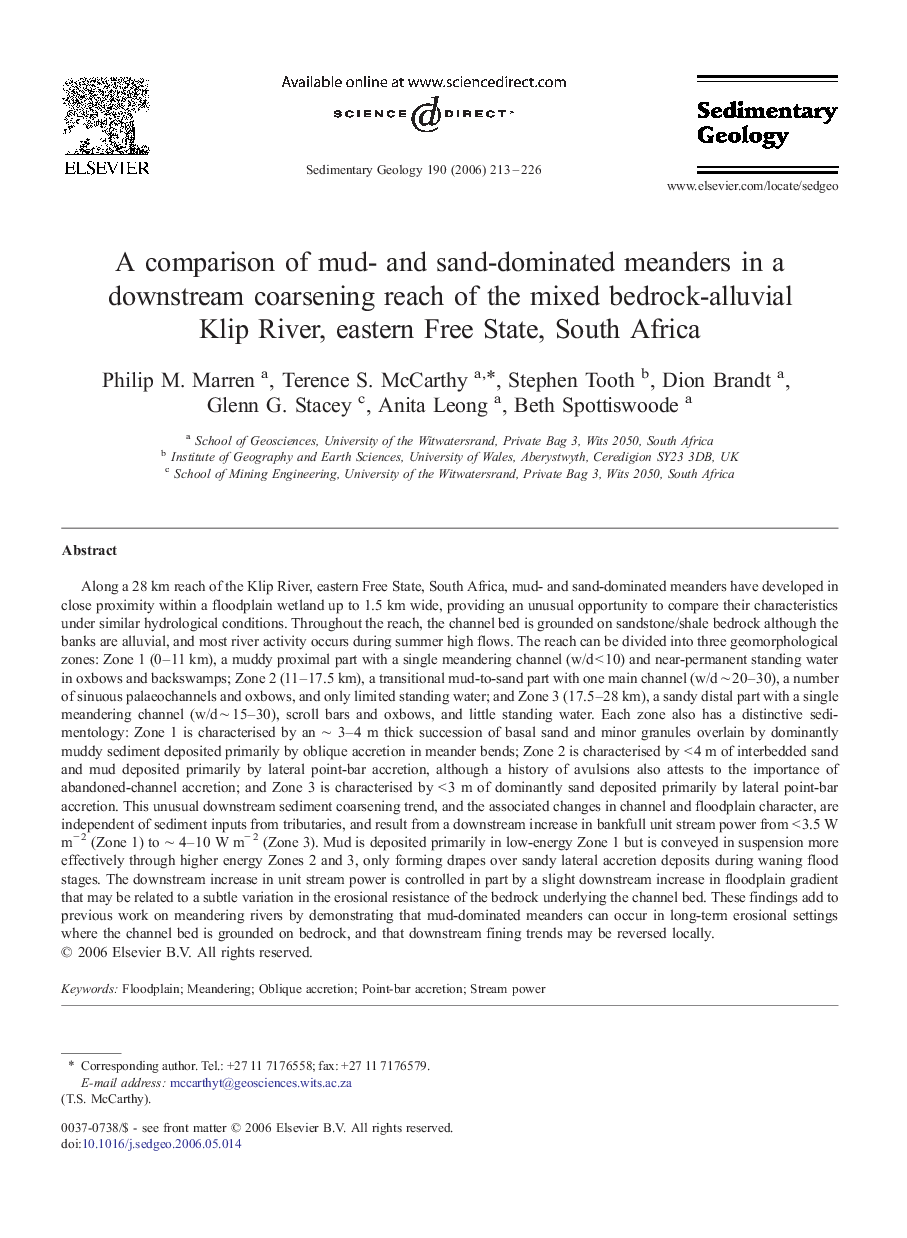| Article ID | Journal | Published Year | Pages | File Type |
|---|---|---|---|---|
| 4690974 | Sedimentary Geology | 2006 | 14 Pages |
Abstract
Along a 28 km reach of the Klip River, eastern Free State, South Africa, mud- and sand-dominated meanders have developed in close proximity within a floodplain wetland up to 1.5 km wide, providing an unusual opportunity to compare their characteristics under similar hydrological conditions. Throughout the reach, the channel bed is grounded on sandstone/shale bedrock although the banks are alluvial, and most river activity occurs during summer high flows. The reach can be divided into three geomorphological zones: Zone 1 (0-11 km), a muddy proximal part with a single meandering channel (w/d < 10) and near-permanent standing water in oxbows and backswamps; Zone 2 (11-17.5 km), a transitional mud-to-sand part with one main channel (w/d â¼Â 20-30), a number of sinuous palaeochannels and oxbows, and only limited standing water; and Zone 3 (17.5-28 km), a sandy distal part with a single meandering channel (w/d â¼Â 15-30), scroll bars and oxbows, and little standing water. Each zone also has a distinctive sedimentology: Zone 1 is characterised by an â¼Â 3-4 m thick succession of basal sand and minor granules overlain by dominantly muddy sediment deposited primarily by oblique accretion in meander bends; Zone 2 is characterised by < 4 m of interbedded sand and mud deposited primarily by lateral point-bar accretion, although a history of avulsions also attests to the importance of abandoned-channel accretion; and Zone 3 is characterised by < 3 m of dominantly sand deposited primarily by lateral point-bar accretion. This unusual downstream sediment coarsening trend, and the associated changes in channel and floodplain character, are independent of sediment inputs from tributaries, and result from a downstream increase in bankfull unit stream power from < 3.5 W mâ 2 (Zone 1) to â¼Â 4-10 W mâ 2 (Zone 3). Mud is deposited primarily in low-energy Zone 1 but is conveyed in suspension more effectively through higher energy Zones 2 and 3, only forming drapes over sandy lateral accretion deposits during waning flood stages. The downstream increase in unit stream power is controlled in part by a slight downstream increase in floodplain gradient that may be related to a subtle variation in the erosional resistance of the bedrock underlying the channel bed. These findings add to previous work on meandering rivers by demonstrating that mud-dominated meanders can occur in long-term erosional settings where the channel bed is grounded on bedrock, and that downstream fining trends may be reversed locally.
Keywords
Related Topics
Physical Sciences and Engineering
Earth and Planetary Sciences
Earth-Surface Processes
Authors
Philip M. Marren, Terence S. McCarthy, Stephen Tooth, Dion Brandt, Glenn G. Stacey, Anita Leong, Beth Spottiswoode,
